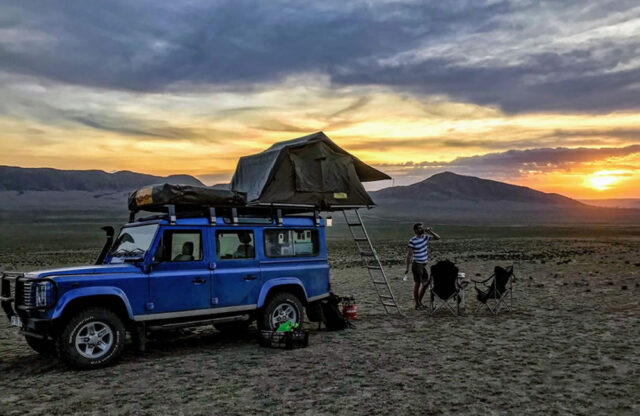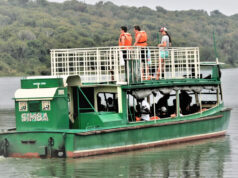Tanzania is one of Africa’s most captivating safari destinations, offering a true sense of wilderness and adventure. From the endless plains of the Serengeti to the dramatic landscapes of the Ngorongoro Crater and the elephant-rich savannahs of Tarangire, the country is a paradise for wildlife enthusiasts.
While many visitors choose guided safaris, self-driving through Tanzania offers a more personal and flexible way to explore its iconic national parks and hidden gems. Imagine cruising along dusty tracks as herds of zebra cross your path, setting up camp under a star-filled sky, and deciding each day where the road will take you next. A self-drive safari in Tanzania combines freedom, discovery, and unforgettable encounters with nature — making it the perfect destination for independent travelers seeking an authentic African adventure.
Why choose a self-drive safari in Tanzania?
- Freedom to explore at your own pace
One of the greatest advantages of a self-drive safari is complete control over your itinerary. You decide when to start your day, which route to follow, how long to spend watching a pride of lions or a herd of elephants, and when to stop for a picnic under an acacia tree.
Unlike group tours or guided safaris, there’s no rigid schedule — only your sense of adventure guiding the journey. This flexibility allows travelers to immerse themselves more deeply in the wild rhythms of Tanzania.
- Cost-effective adventure
Tanzania’s guided safaris can be quite expensive, especially when including luxury lodges or private guides. Self-driving offers a budget-friendly alternative without sacrificing the thrill of the experience.
By renting a 4×4 vehicle and camping or staying in budget lodges, travelers can save significantly on guide and tour company fees. This makes it possible to spend more days in the parks or visit multiple destinations within the same budget.
- Access to world-class National Parks
Tanzania’s road network connects some of the most famous wildlife destinations in Africa. On a self-drive safari, you can easily explore Serengeti National Park, known for the Great Wildebeest Migration; Ngorongoro Conservation Area, a natural wonder with breathtaking crater views and dense wildlife populations; Tarangire National Park, famous for its large elephant herds and baobab-studded landscapes; and Lake Manyara National Park, renowned for tree-climbing lions and flocks of flamingos.
Each destination offers unique driving experiences and scenery, making a self-drive safari a perfect way to experience Tanzania’s diversity.
- Well-developed safari infrastructure
Tanzania’s self-drive safari infrastructure has improved greatly over the years. Reliable 4×4 car rental companies now offer fully equipped vehicles with camping gear, GPS, and detailed maps.
Many national parks have clearly marked roads, campsites, and park offices, making it easier for visitors to navigate and stay safe. With proper preparation and a sense of adventure, even first-time self-drivers can confidently explore Tanzania’s parks.
- Close encounters with wildlife
Driving yourself means you can linger longer at a sighting or quietly observe animals without the time constraints of a guided group. This makes encounters more personal and intimate.
Imagine sitting quietly as a herd of elephants crosses the road in front of your vehicle, or watching lions lounging in the golden grass as the sun sets — moments like these become even more special when you discover them on your own.
What to expect on the roads during the self-drive experience in Tanzania
Vehicles and road conditions
Tanzania’s roads are a mix: paved highways connect major towns, but many park roads and rural tracks are unsealed and can be challenging, particularly after rain. For that reason, a proper 4×4 with high clearance is strongly recommended for national parks and off-piste routes. Inside parks you must stick to designated tracks — off-road driving is generally prohibited to protect habitat and prevent disturbance. Plan for slower travel times than the distance alone suggests.
Permits, park fees, and rules
Entry fees are charged per person and per vehicle in many parks, and they vary by park and by season. For planning purposes, anticipate daily park fees plus vehicle entry charges (these can add a significant amount to your daily budget). You’ll also need to follow park rules — driving times, speed limits, and no-go zones (for example, night driving in parks is often restricted). Check current rates and regulations for the parks you plan to visit before you go
Rental requirements & insurance
Most rental companies will require a valid driver’s license (often your home license plus an International Driving Permit), a deposit, and adherence to their terms (authorized drivers only, restricted areas noted, etc.). Carefully review insurance coverage: standard policies may exclude certain parks or types of damage, and extras like third-party liability or roadside assistance are worth considering
Best time to go (and how timing affects a self-drive)
Tanzania has distinct wet and dry seasons, and the wildlife experience changes with them. The dry season (roughly June–October) concentrates animals around waterholes and is prime for predator sightings — it’s also the busiest time on the roads and in parks. The Great Migration has seasonal patterns: if you want river crossings in the Serengeti (dramatic but crowded), time your trip to coincide with the southern and western movements (Ndutu in the south in the short rains, northern Serengeti for crossings mid-to-late year). Shoulder seasons can offer fewer crowds, greener scenery, and lower rates — but be prepared for some muddy tracks.
Sample 10-day self-drive itinerary (classic loop)
Day 1: Arrive Arusha — final provisioning and hire check.
Day 2: Drive to Tarangire — afternoon game drive; night near park.
Day 3: Tarangire to Lake Manyara — birding and tree-climbing lions.
Day 4–6: Serengeti (move through southern/central/ndutu areas depending on migration).
Day 7: Full day Serengeti — early morning and late afternoon game drives.
Day 8: Serengeti to Ngorongoro Conservation Area — descend into crater for a game drive.
Day 9: Ngorongoro to Arusha — return vehicle, explore town or relax.
Day 10: Depart.
Safety, manners, and wildlife etiquette
- Never leave your vehicle in unpermitted areas; animals are unpredictable and leaving the car can be dangerous.
- Keep windows partly closed around predators and always obey ranger and park signage.
- Respect local communities: villages, livestock, and cultural sites deserve the same care you’d expect elsewhere.
- Avoid night driving outside established routes — collisions with animals and poorly lit vehicles are real risks
Packing & vehicle checklist (essentials)
- Spare tyre, jack, jumper cables, tow rope, basic tool kit.
- Extra fuel jerrycans (long stretches between fuel stations).
- Water (several liters per person per day), first-aid kit, insect repellent.
- Paper and electronic copies of permits, driver’s license, IDP, and insurance.
- Sun protection, binoculars, camera, and comfortable layers (mornings can be chilly).
Final tips to make it sing
- Book peak park entry dates and camps early (Serengeti and Ngorongoro fill quickly).
- Consider a local SIM (coverage in many park areas is patchy but useful around towns).
- If you prefer fewer logistics, many companies offer hybrid packages — self-drive plus route planning and 24/7 support. That gives independence but with local backup
In conclusion
Tanzania pairs world-class wildlife, diverse ecosystems, and travel infrastructure that supports independent adventure — making it an outstanding choice for a self-drive safari. With the right vehicle, sensible planning, and respect for park rules and wildlife, you’ll enjoy freedom, incredible sightings, and the personal thrill of charting your own course through one of Earth’s great wild places.






